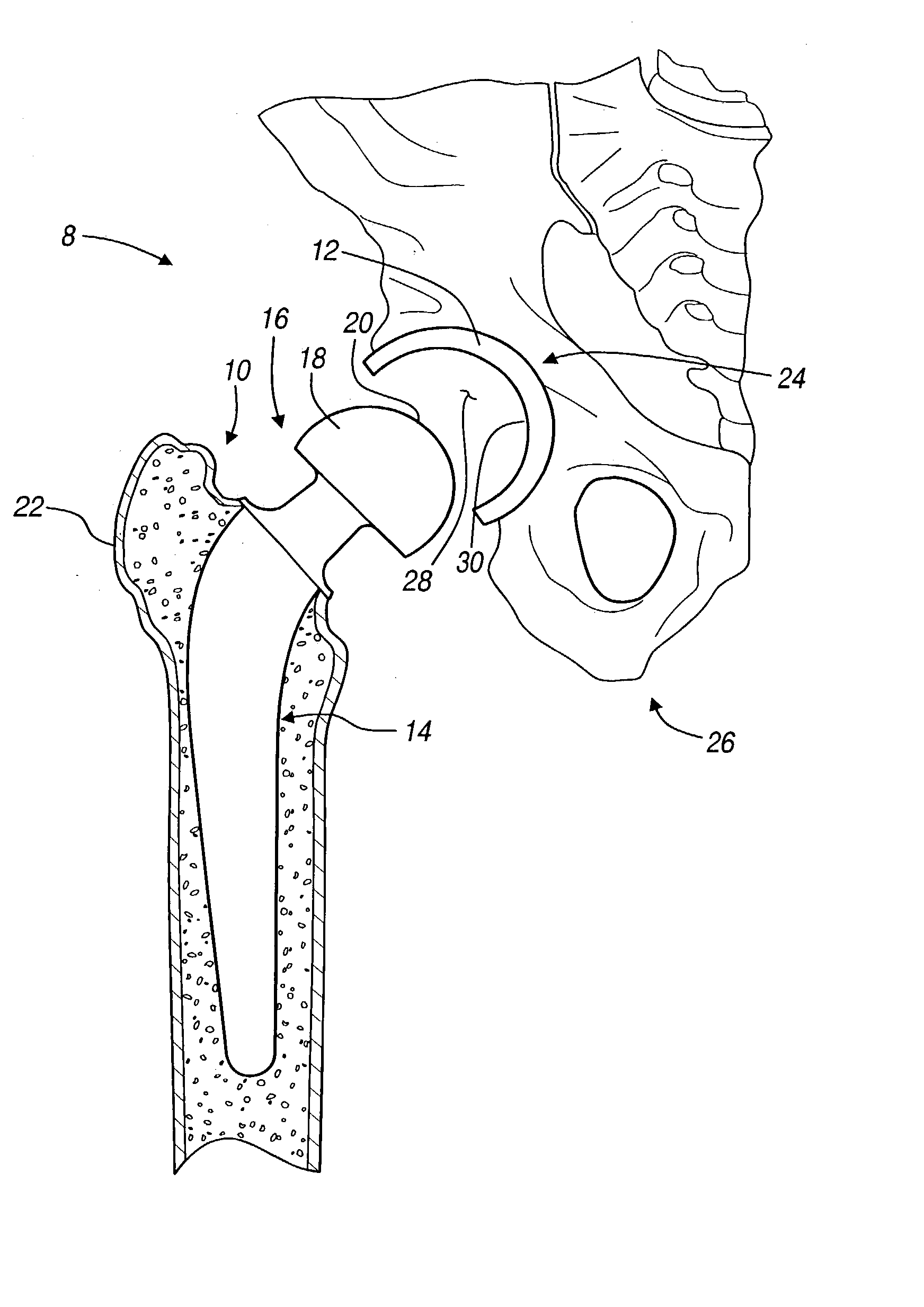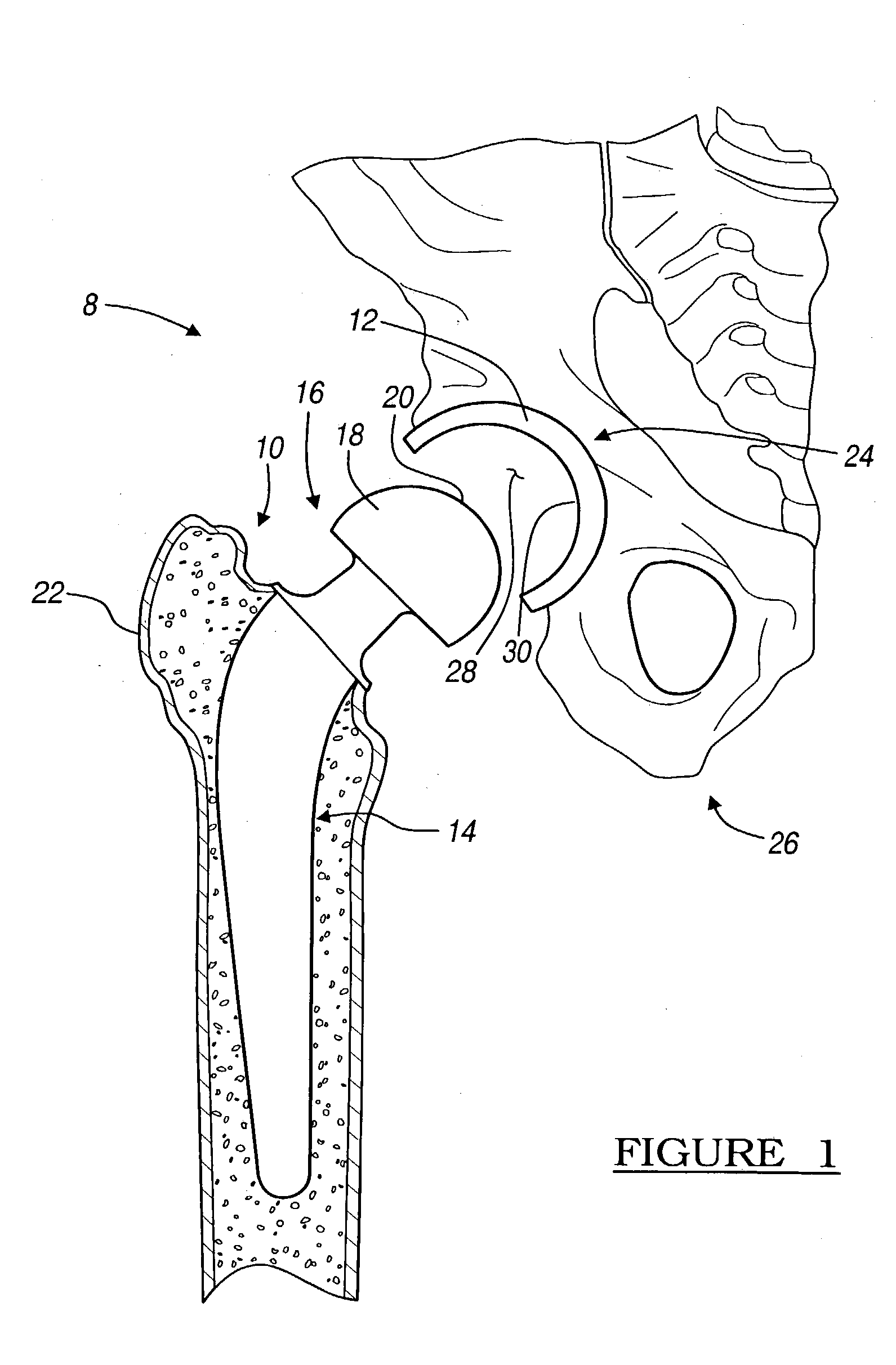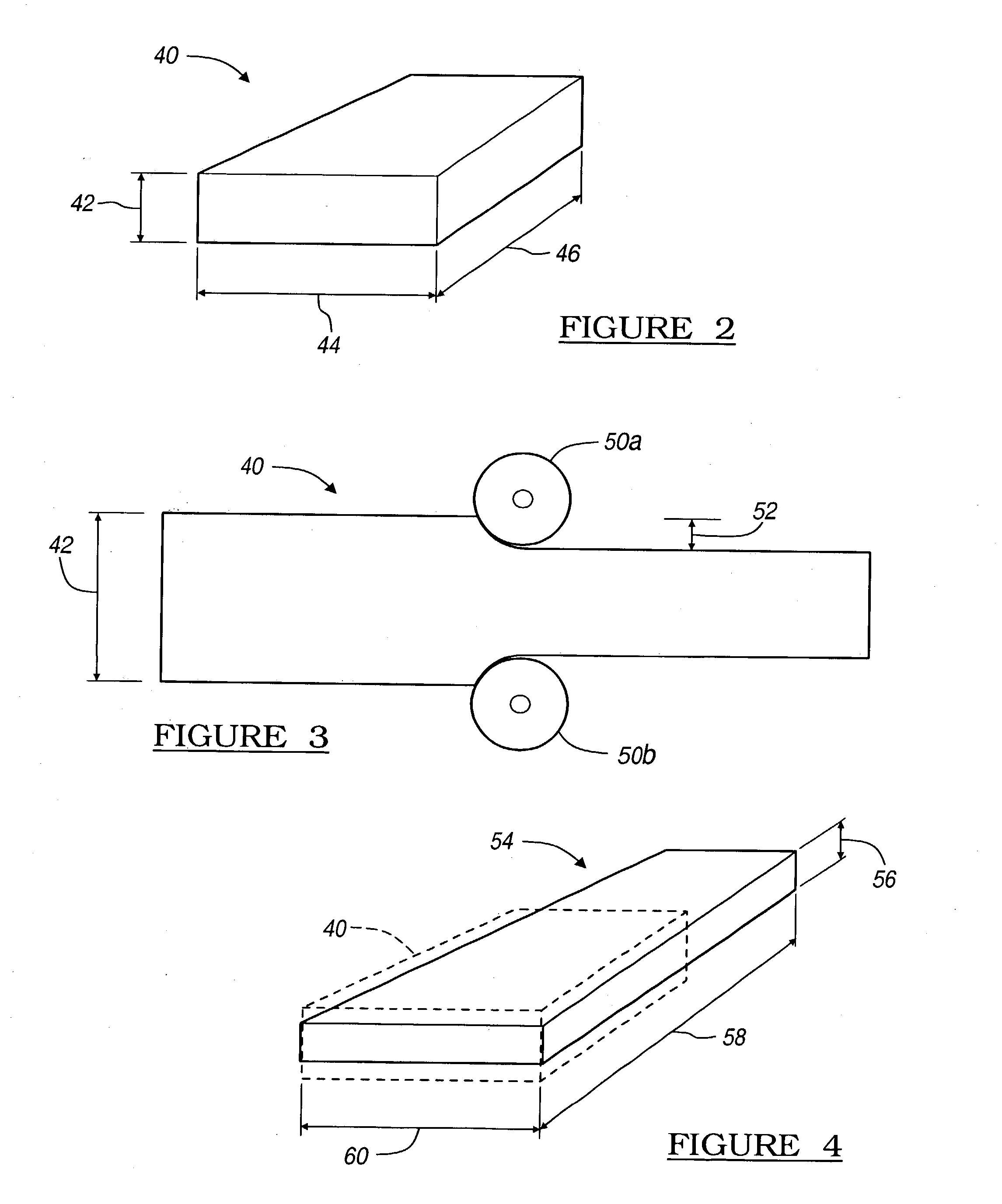Wear surface for metal-on-metal articulation
a technology of wear surface and metal bearing, which is applied in the field of metal on metal bearing prosthetics, can solve the problems of increasing the wear life of the prosthetic joint, affecting the quality of life of the prosthetic, and the difficulty of forming or storing the coating on the prosthetic, so as to reduce the possibility of wear debris and increase longevity
- Summary
- Abstract
- Description
- Claims
- Application Information
AI Technical Summary
Benefits of technology
Problems solved by technology
Method used
Image
Examples
example 1
Hardening the Stock Material
[0028] With reference to FIG. 2, prosthetics, such as the hip prosthetic 8, are generally formed from a stock bar member 40. The stock member 40 may be any appropriate bio-compatible material but generally includes an alloy of cobalt, chromium, and molybdenum (CoCrMo). The unhardened stock member 40 generally includes a first set of unhardened dimensions. Generally, the dimensions include an unhardened height 42, width 44, and depth 46. Work hardening can then be performed on the non-work hardened stock member 40 through any generally known hardening methods. For example, the material may be shot peened, roller hardened, or laser shocked to induce the desired hardness. Generally, however, to induce enough hardness throughout the entire stock member 40, an intense physical working such as roller working is used.
[0029] When performing roller hardening, any one of the three unwork hardened dimensions 42, 44, 46 may be reduced. With reference to FIG. 3, the s...
example 2
Hardening a Rough Formed Prosthetic
[0033] With reference to FIG. 5, a detailed portion of an unfinished or rough worked head member 60 is illustrated. The unfinished head member 60 includes a final or finished selected surface dimension 62 and an unfinished surface dimension 64. Generally, the unfinished surface dimension 64 is greater than the finished dimension 62. Therefore, the unfinished head member 60 must be finished in some method to reduce the unfinished dimension 64 to the finished selected dimension 62.
[0034] When the unfinished head member 60 is formed from a non-work hardened stock member, such as the non-work hardened stock member 40, the unfinished head member 60 can be work hardened by generally known methods. For example, the unfinished head member 60 can be hardened with shot peening or laser shot peening to increase the hardness of the surface.
[0035] With reference to FIG. 6, once the rough formed head 60 has been hardened, such as through shot peening, the shot p...
PUM
| Property | Measurement | Unit |
|---|---|---|
| Length | aaaaa | aaaaa |
| Hardness | aaaaa | aaaaa |
Abstract
Description
Claims
Application Information
 Login to View More
Login to View More - R&D
- Intellectual Property
- Life Sciences
- Materials
- Tech Scout
- Unparalleled Data Quality
- Higher Quality Content
- 60% Fewer Hallucinations
Browse by: Latest US Patents, China's latest patents, Technical Efficacy Thesaurus, Application Domain, Technology Topic, Popular Technical Reports.
© 2025 PatSnap. All rights reserved.Legal|Privacy policy|Modern Slavery Act Transparency Statement|Sitemap|About US| Contact US: help@patsnap.com



